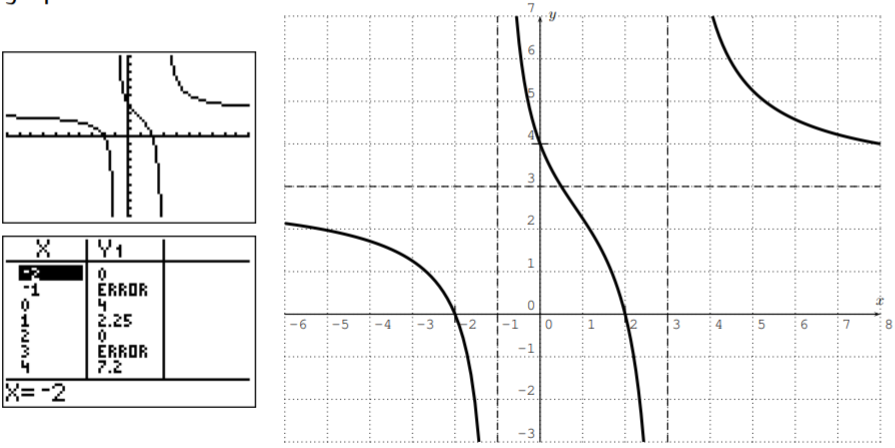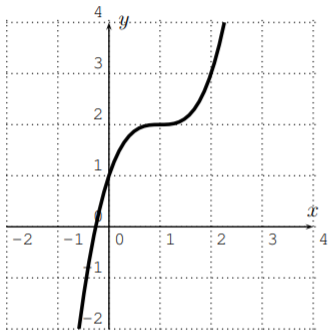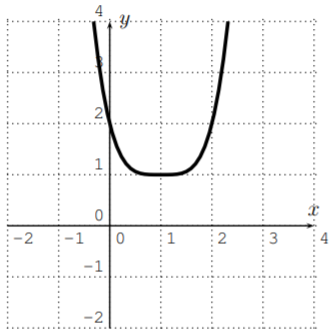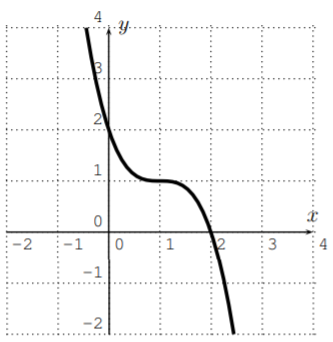27.2: Revisión de polinomios y funciones racionales
- Page ID
- 117670
Dividir los polinomios:\(\dfrac{2x^3+x^2-9x-8}{2x+3}\)
- Contestar
-
\(x^{2}-x-3+\dfrac{1}{2 x+3}\)
Encuentra el resto al dividir\(x^3+3x^2-5x+7\) por\(x+2\).
- Contestar
-
\(21\)
Cuál de los siguientes factores es un factor de\(x^{400}-2x^{99}+1\):\[x-1, \quad x+1, \quad x-0 \nonumber \]
- Contestar
-
\(x − 1\)es un factor, no\(x + 1\) es un factor, no\(x − 0\) es un factor
Identificar el polinomio con su gráfica.
- \(f(x)=-x^{2}+2 x+1\)gráfico: _______________
- \(f(x)=-x^{3}+3 x^{2}-3 x+2\)gráfico: _______________
- \(f(x)=x^{3}-3 x^{2}+3 x+1\)gráfico: _______________
- \(f(x)=x^{4}-4 x^{3}+6 x^{2}-4 x+2\)gráfico: _______________
- Contestar
-
- \(\leftrightarrow \text { iii) }\)
- \(\leftrightarrow \text { iv) }\)
- \(\leftrightarrow \mathrm{i})\)
- \(\leftrightarrow \text { ii) }\)
Croquis de la gráfica de la función:\[f(x)=x^4-10x^3-0.01x^2+0.1x \nonumber \]
- ¿Cuál es su ventana de visualización?
- Encuentra todas las raíces, todos los máximos y todos los mínimos de la gráfica con la calculadora.
- Contestar
-

Encuentra todas las raíces de\(f(x)=x^3+6x^2+5x-12\).
Utilice esta información para factografiar\(f(x)\) completamente.
- Contestar
-
\(f(x)=(x-1)(x+3)(x+4)\)
Encontrar un polinomio de grado\(3\) cuyas raíces son\(0\),\(1\), y\(3\), y así que\(f(2)=10\).
- Contestar
-
\(f(x)=(-5) \cdot x(x-1)(x-3)\)
Encontrar un polinomio de grado\(4\) con coeficientes reales, cuyas raíces incluyen\(-2\),\(5\), y\(3-2i\).
- Contestar
-
\(f(x)=(x+2)(x-5)(x-(3-2 i))(x-(3+2 i))\)(otras respuestas correctas son posibles, dependiendo de la elección del primer coeficiente)
Vamos\(f(x)=\dfrac{3x^2-12}{x^2-2x-3}\). Esbozar la gráfica de\(f\). Incluye todas las asíntotas verticales y horizontales, todos los agujeros y todas las\(x\) - y\(y\) -intercepciones.
- Contestar
-
\(f(x)=\dfrac{3(x-2)(x+2)}{(x-3)(x+1)}\)tiene dominio\(D=\mathbb{R}-\{-1,3\}\), asínmpta horizontal. \(y = 3\), asínta vertical. \(x = −1\)y\(x = 3\), no descont removible.,\(x\) -intercepta en\(x = −2\) y\(x = 2\) y\(x = 3\),\(y\) -interceptar en\(y = 4\), grafica:

Resolver para\(x\):
- \(x^4+2x< 2x^3+x^2\)
- \(x^2+3x\geq 7\)
- \(\dfrac{x+1}{x+4}\leq 2\)
- Contestar
-
- \((-1,0) \cup(1,2)\)
- \(\left(-\infty, \dfrac{-3-\sqrt{37}}{2}\right] \cup\left[\dfrac{-3+\sqrt{37}}{2}, \infty\right)\)
- \((-\infty,-7] \cup(-4, \infty)\)






